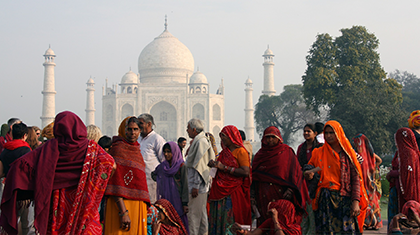In low- and middle-income countries, or LMICs, the cost of medication signifies a substantial burden on consumers of low financial means, making price cap regulations feel intuitively beneficial. Yet a study by the University of Miami’s Emma Boswell Dean sheds light on this policy direction as one not to take.
Through legislations in 2013 and 2014, India’s government established price ceilings on on-patent “essential medicines” and determined generic drugs, including various cardiovascular and diabetes medications. Though the policy resonates as a fair attempt to curb drug prices, especially in an environment of oftentimes scarce resources and widespread poverty, Dean’s research finds that price ceilings negatively affected India’s most vulnerable, precisely the target group that the regulations were meant to help.
Every marketplace has societal and policy forces all their own. Price controls in high-income countries, for example, tend to occur as reference prices that determine reimbursement levels, whereas, in LMICs, control tends to be placed directly on prices. Economic factors represent further differences. In the United States, health insurance coverage is more widespread, as is a higher adherence to generic drug quality, enabling manufacturers to compete based on price and not brand name.
These marketplace dynamics contrast with India’s still low rate of insurance coverage and a “branded generics” market. Falsified medicines constitute a serious concern in LMICs; studies estimate that 10 to 15 percent of medicines in these countries are substandard or fakes, as Dean’s working paper points out. In India, the estimate is 6 percent, according to the government, but still significant enough to deflate consumer confidence especially given unstrict governmental supervision of generics manufacturing. The risk of low quality or fraudulent drugs leaves distrusting patients willing to pay higher for generics with established brand names, or branded generics, hindering the efficiency of generic drugs as a tool for more affordable prices.
With generics manufacturers competing on name recognition, the Indian government saw the need for another route, such as through the price ceilings. Dean, assistant professor in the Department of Health Management and Policy at the Miami Business School, looks at India’s pharmaceutical market in the time period between 2010 and 2015, allowing for comparison, in the short-term, before and after the price cap legislations were enacted.
Dean uses a difference-in-differences framework, in which two groups are compared based on a given variable – price control here. The study accounts for India’s three industry players: multinationals, large generics exporters, and small, local generics firms.
Using a unique data set on pharmaceutical quality and panel data methods (multi-dimensional data that allows for measurements over time), Dean shows that multinationals enjoyed an increase in market share, while the small, local firms saw their market share decrease by 14.5 percent. Many of the heavily impacted local producers exited the market for the regulated drug segments. Though their products were generally of lesser quality than that of the multinationals or exporting generics firms – as Dean’s analysis also shows – these small firms usually provided lower-cost options. Their market exit meant reduced options for low-income consumers.
All players had to contend with strain on their supply chain. India’s geography with many dispersed rural villages signifies high distribution costs, considering sparse population per village and poor infrastructure such as unpaved roads. Increased marginal costs due to price ceilings led many producers from all three firm types to stop distribution of price-capped products to these areas, resulting in hindered access to “essential medicines” for rural patients, who already suffered from low accessibility to medical care.
Price ceilings had positive effects, however, including pricing spillovers, or reductions in price of closely related products. Price caps also helped bring drug quality closer to a market-level standard, since low-level manufacturers, with often lower quality products, exited the market. But the price control, counterintuitively, mostly benefited groups that needed the least help: the more financially able, quality-conscious consumers now paying only up to a certain price point for regulated drugs, and large multinational manufacturers capable of sustaining marginal costs and maintaining themselves viable in the competitive landscape.
Upon finding that price caps detrimentally affect low-income families, especially in rural areas, Dean points out that India would benefit from alternatives to price ceilings. More government oversight of generics manufacturing, such as by enforcing regulation that requires producers to get approved by the World Health Organization, would likely increase quality and break the branded generics trend. The government could also implement supply chain incentives to encourage producers to distribute to rural areas, instead of exiting these key, and most disadvantaged, markets.
Studies into the impacts of price regulations in LMIC pharmaceutical markets remain few and have generally focused on limited geographical areas. Dean’s research looks at India as a whole, expanding analysis to a national level and providing insight into an arena ripe for further investigation. Further data may uncover more long-term effects on manufacturer and consumer behaviors. Meanwhile, this study helps to highlight that government regulation on pharmaceutical drugs, while well-intended, may intensify the inequity to low-income consumers and exacerbate the burden it aims to correct.
Source:Dean, Emma B., 2019, "Who Benefits from Pharmaceutical Price Controls? Evidence from India," CGD Working Paper No. 509 (Washington: Center for Global Development)

